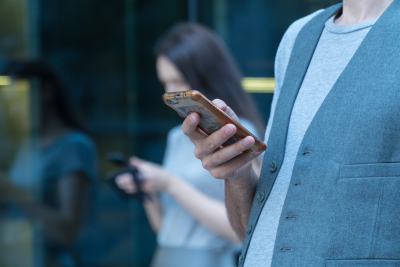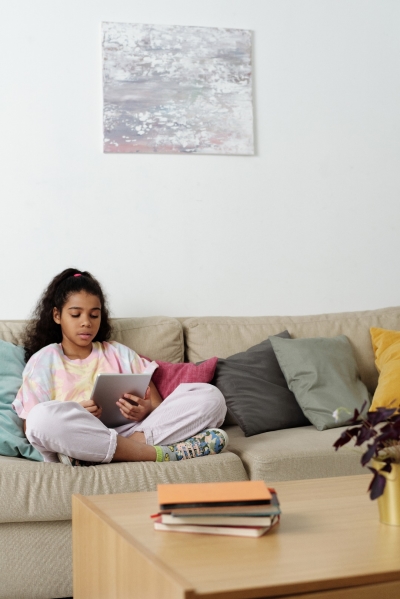
Highest and Lowest Radiation (SAR Value) Cell Phones of 2019
When looking for cell phones with the lowest radiation level (measured using a specific absorption rate value, also known as a SAR value, or SAR rating), it can be quite difficult to navigate the market. Samsung seem to be the most active in terms of providing information relating to the lowest radiation cell phones and there is an increased interest in the United States especially.
We still don’t have any clear-cut answers to questions relating to how a higher SAR value affects human health or how lowest SAR phones can benefit it. Despite this lack of knowledge, mobile phone manufacturers do include information relating to the SAR value of their devices on the device itself, or in an information leaflet which comes with the device. “We would like to be able to say that cell phones are safe but we can’t. The most recent science, while not conclusive, raises serious issues about the cancer risk of cell phone use that must be addressed through further research.” said Olga Naidenko, Ph.D., Senior Scientist at the non-profit organisation Environmental Working Group (EWG).[1]
The method of measuring SAR values is controversial because the positioning of the model mobile phone could never truly reflect real life. Previously, the tested mobile phone was placed at a distance of 15-25mm to the phantom which does not resemble the actual manner of holding a mobile phone during use.[2]
Recently, this changed in order to improve safety precautions. Testing the SAR value of a phone has been moved to 5mm, this shows that the industry safety standards regarding the maximum exposure of mobile phones has improved, as this more closely mimics how closely most people hold a phone to their ear.[3] Each phone is designed to use the minimum power or energy required to reach the network so the actual SAR level of the mobile phone should be below this value. As the effects of EMF are unknown, it’s better to be safe than sorry!
Mobile phones are placed in various positions next to the model of a head or body. The mobile phones operate on the highest power level. Simultaneously, the electric field is measured by a robotic probe at specific locations. The radiofrequency energy penetrating the phantom is monitored by probes which measure the SAR in watts per kilogram of tissue. The highest SAR values for each frequency band are included in the final results.
In the same way that food is labelled with nutritional facts, mobile phones should list a certification or report with regards to their radiation output. This article contains a list of 20 popular mobile phones, 10 with the highest and 10 with the lowest SAR values. If you don’t know what SAR is, you can read about it here. The following list is based on data published by ‘Connect’, which is a German monthly about telecommunication, they have conducted tests on mobile phones since 1993.[4]
Cell phones with the highest SAR value globally
Alcatel One Touch Idol 3 5.5 SAR value: 1.63
Huawei Ascend Mate 7 SAR value: 1.54
Honor 8 SAR value: 1.5
Apple iPhone 7 SAR value: 1.38
Gigaset ME Pro SAR value: 1.3
ZTE Blade S6 SAR value: 1.29
Apple iPhone 7 Plus SAR value: 1.24
Huawei Mate 8 SAR value: 1.18
Google Nexus 6P SAR value: 1.17
Apple iPhone SE SAR value: 1.17
As you can see, Alcatel, Huawei (Honor is a Huawei sub-brand) and Apple produce smartphones with the highest SAR value.
Cell phones with the lowest SAR value in the USA
Samsung Galaxy Note T-Mobile SAR value: 0.19
Samsung Galaxy Note Unlocked SAR value: 0.27
Samsung Galaxy Note 2 Verizon Wireless SAR value: 0.28
Samsung Galaxy S II Skyrocket AT&T SAR value: 0.30
Kyocera DuraXT Sprint SAR value: 0.32
Pantech Discover AT&T SAR value: 0.35
Samsung Galaxy Beam Unlocked SAR value: 0.36
Samsung Galaxy Stratosphere II Verizon Wireless SAR value: 0.37
Pantech Swift AT&T SAR value: 0.38
Samsung Jitterbug Plus GreatCall SAR value: 0.40
This information was found here, unlike with the highest SAR values, we also chose to include carriers. Clearly and as mentioned previously, Samsung is the winner in terms of manufacturing phones with a lower SAR value than most. There are also few cheaper and lesser known brands which in the past have been noted to have slightly lower SAR values such as Meizu (China), BQ (Spain), Wiko (France), Fairphone (Amsterdam) and Xiaomi (China). We believe that the list of lowest radiation cell phones will grow as more companies become aware of the importance of this value.
For a long time there were no established standards for SAR across the mobile phone industry because there wasn’t any governmental action to require it.[5] In the US, the FCC, Federal Communications Commission, sets the radio frequency safety guidelines that all phones must meet before being sold in the US. Current reference standards and limits.”[6] However, in Europe, “the European Council Recommendation 519/1999/EC for exposure guidelines has adopted the recommendations made by the International Commission on Non-Ionising Radiation Protection (ICNIRP Guidelines 1998).
Region/Country: US Reference to SAR measurement protocol: Federal Communications Commission (FCC) Guidelines (FCC 1997) Reference to SAR limit: American Standard ANSI C95.1 (ANSI 1992)Limit: 1.6 W/Kg in 1g of tissue
Region/Country: Europe Reference to SAR measurement protocol: European Specification ES 59005 (1998) Reference to SAR limit: ICNIRP Guidelines 1998 (ICNIRP 1998) Limit: 2.0 W/Kg in 10g of tissue
Region/Country: Australia Reference to SAR measurement protocol: Australian Communications Authority (ACA) Standard Reference to SAR limit: Australian Standard AS/NZS 2772.1 (ACA RS 1999) Limit: 1.6 W/Kg in 1g of tissue
Technology has moved forward since the nineties, at an alarming rate, especially when it comes to mobile phones. The fact is that most manufacturers are thinking that phones which are smaller, thinner and faster are better without really considering the impact these decisions might have on their customers. To see if your phone is one of the lowest SAR phones, check the Specific Absorption Rate (SAR) for your phone here.
The Environmental Working Group has published a very useful guide (click here) to safe mobile phone use and has collected information relating to over 1,000 smartphones and the amount of radiation they emit.[7] EWG also own the Skin Deep Cosmetics Database, which provides information relating to the safety of various cosmetics.[8]
Just to be on the safe side, try to reduce your radiation exposure.
Taking an occasional digital detox is one very simple way of reducing your exposure to radiation. We also have articles which may help you find the inspiration you need to spend less time on your mobile phone, such as The Top 5 Destinations for a Digital Detox, 30 Offline Hobbies to Try Outdoors, and many more.
Is there anything you’d like to add, have we missed anything? If you’re interested in sharing your experiences with us or writing a guest post for us, send us an email via hello@mudita.com!
Please feel free to get in touch via social media (send us some photos or videos too), you can find us on Facebook, Twitter and Instagram, let’s connect! To learn more about Mudita, take a look at our website and our other posts.
If you enjoyed reading this article, please share and recommend it!
Related stories

Learn About Cellular Frequencies and What They Mean
There are many aspects of smartphone technology but for now, we’d like to introduce you to how smartphones use cellular frequencies.

Is Wi-Fi Harmful to Living Beings?
Wireless internet has become a standard in almost every home. However, not everyone is asking themselves: can Wi-Fi be harmful to our health?

The Two Sides of the Story Is Microwave Radiation Dangerous?
A microwave oven is a device present in almost every home. Is microwave radiation really harmful? Find out the answer to this question!
If you'd like to receive the best stories from our blog, keep up to date with our progress and get notified about our product releases and special discounts.